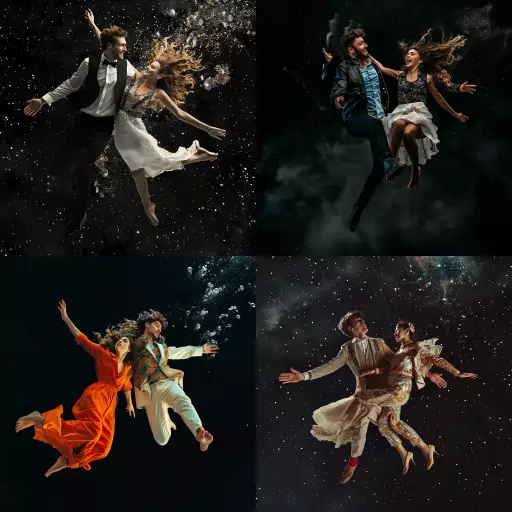Explore the Best AI Image Gallery

AI-Powered Imagery: Reshaping the Creative Landscape
The realm of art and design is undergoing a seismic shift with the emergence of AI-powered image creation tools. These sophisticated algorithms, fueled by massive datasets of images and code, are capable of generating stunningly realistic and imaginative visuals, blurring the lines between human creativity and artificial intelligence.
From generating marketing materials to crafting personalized artwork, the applications of AI image creation tools are vast and ever-expanding. This new technology has ignited a fervent debate within the creative industry, raising questions about its impact on artists, the nature of creativity itself, and the ethical considerations surrounding its use.
Unlocking Creative Potential: A Spectrum of Applications
- Marketing and Advertising: AI image generation tools can create eye-catching visuals for social media campaigns, website banners, and product advertisements, enabling businesses to personalize their marketing efforts and reach wider audiences.
- Content Creation: Writers, bloggers, and journalists can leverage these tools to enhance their content with custom illustrations, graphics, and visual metaphors, making their work more engaging and immersive.
- Fine Art and Design: Artists are exploring AI as a collaborative tool to generate unique concepts, experiment with new styles, and push the boundaries of artistic expression. AI can assist in creating textures, patterns, and compositions, offering fresh perspectives and possibilities.
- Education and Research: Educators can utilize AI-generated images to illustrate complex concepts, bring textbooks to life, and create interactive learning experiences. Researchers can leverage these tools to visualize data, simulate scenarios, and accelerate their discoveries.
Navigating the Ethical Landscape
While AI image creation tools offer immense potential, they also raise several ethical concerns that require careful consideration:
- Copyright and Ownership: The question of who owns the copyright to AI-generated images remains a complex legal issue. Is it the creator of the algorithm, the user who provides the input, or the AI itself?
- Bias and Representation: AI algorithms are trained on vast datasets, which can inadvertently perpetuate existing biases and stereotypes. It is crucial to ensure that AI-generated imagery reflects diversity and inclusivity.
- Job Displacement: There are concerns that AI image creation tools may automate tasks currently performed by human artists and designers, potentially leading to job losses in the creative sector.
- Misinformation and Deepfakes: The ability to generate highly realistic images raises concerns about the potential for misuse, such as creating convincing fake news or manipulating public perception through deepfakes.
Shaping the Future of Creativity
The future of AI image creation tools is brimming with possibilities. As technology advances, we can expect:
- Increased Personalization and Customization: Users will have greater control over the creative process, able to tailor images to their specific needs and preferences.
- Enhanced Collaboration between Humans and AI: Artists and designers will increasingly leverage AI as a collaborative partner, enhancing their creativity and efficiency.
- Emergence of New Art Forms: AI-powered tools will pave the way for entirely new forms of artistic expression, pushing the boundaries of imagination and innovation.
- **Ethical Frameworks and Regulations:** The development of robust ethical guidelines and regulations will be crucial to ensure responsible and equitable use of AI image creation technology.
The convergence of artificial intelligence and creativity is a transformative phenomenon with profound implications for the creative industry. By embracing its potential while addressing its ethical challenges, we can unlock new frontiers of artistic expression and shape a future where human and machine creativity flourish in harmony.
](https://images.ai-img.art/thumbnails/150/c2c9c48b38fae37f0a457b80b084ed01ba803810fc8f488c8f610c03abc74049.webp)





](https://images.ai-img.art/thumbnails/150/bddf3ae4a232290858389b933c866ad3be429ef2e25c23a9f4d7713ed6e44d0b.webp)
](https://images.ai-img.art/thumbnails/150/f67d9af3398150f2ab1bcf250717fea134275e2ca896252b54a4d9bb3719f9ac.webp)
](https://images.ai-img.art/thumbnails/150/f9584153b4cddd8c9fab611dc10247549b275c59bc173251e37d0935874f9deb.webp)















](https://images.ai-img.art/thumbnails/150/008b5d5d49667cc2e93a5f8a8adfaa545963da99c39ff0901f5296294636400d.webp)
















](https://images.ai-img.art/thumbnails/150/4289d1230b86a96c4d556636c3167bed0ef38f850826549517e4e45db4d87bf7.webp)